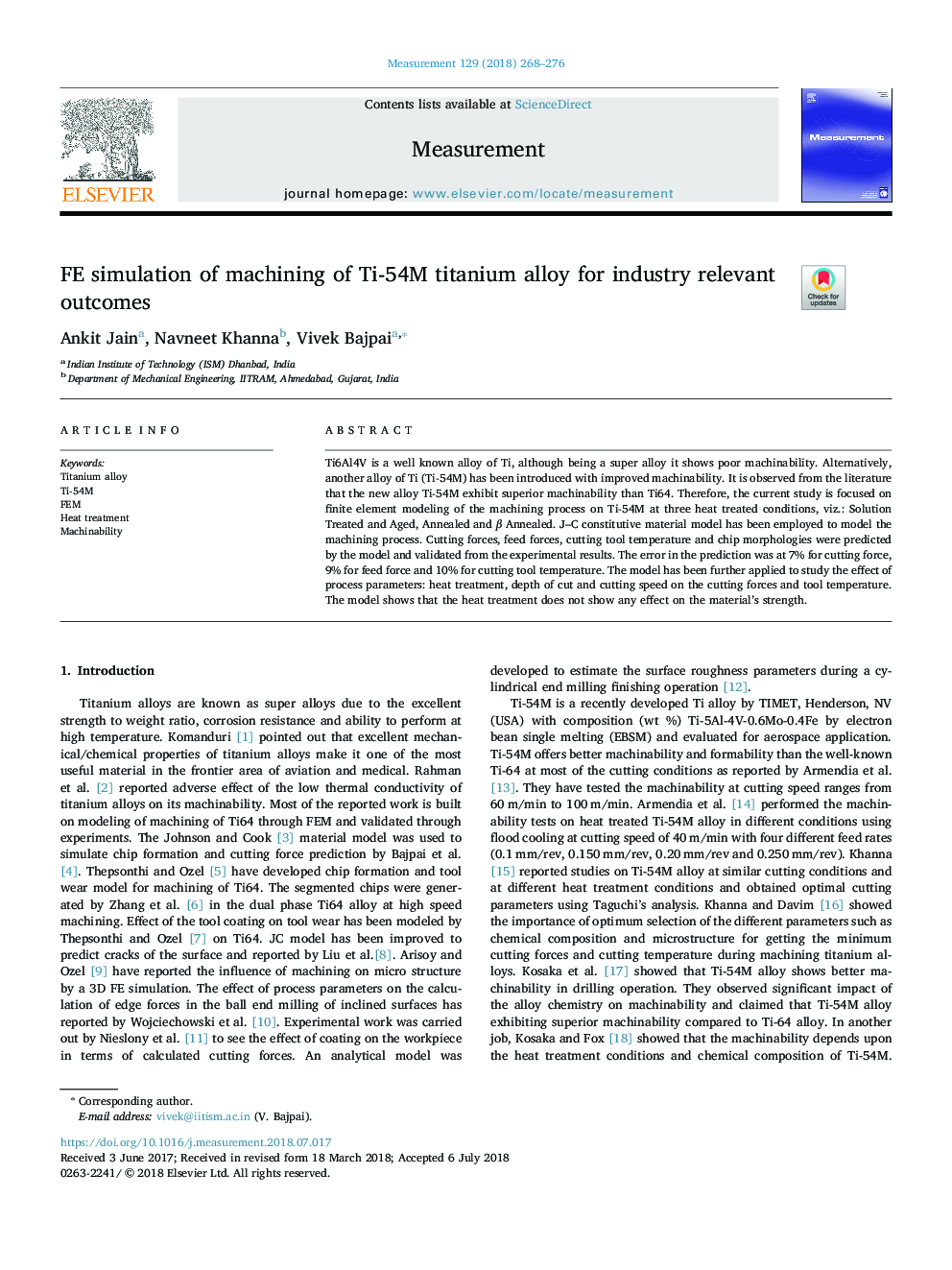| Article ID | Journal | Published Year | Pages | File Type |
|---|---|---|---|---|
| 7120137 | Measurement | 2018 | 9 Pages |
Abstract
Ti6Al4V is a well known alloy of Ti, although being a super alloy it shows poor machinability. Alternatively, another alloy of Ti (Ti-54M) has been introduced with improved machinability. It is observed from the literature that the new alloy Ti-54M exhibit superior machinability than Ti64. Therefore, the current study is focused on finite element modeling of the machining process on Ti-54M at three heat treated conditions, viz.: Solution Treated and Aged, Annealed and β Annealed. J-C constitutive material model has been employed to model the machining process. Cutting forces, feed forces, cutting tool temperature and chip morphologies were predicted by the model and validated from the experimental results. The error in the prediction was at 7% for cutting force, 9% for feed force and 10% for cutting tool temperature. The model has been further applied to study the effect of process parameters: heat treatment, depth of cut and cutting speed on the cutting forces and tool temperature. The model shows that the heat treatment does not show any effect on the material's strength.
Related Topics
Physical Sciences and Engineering
Engineering
Control and Systems Engineering
Authors
Ankit Jain, Navneet Khanna, Vivek Bajpai,
